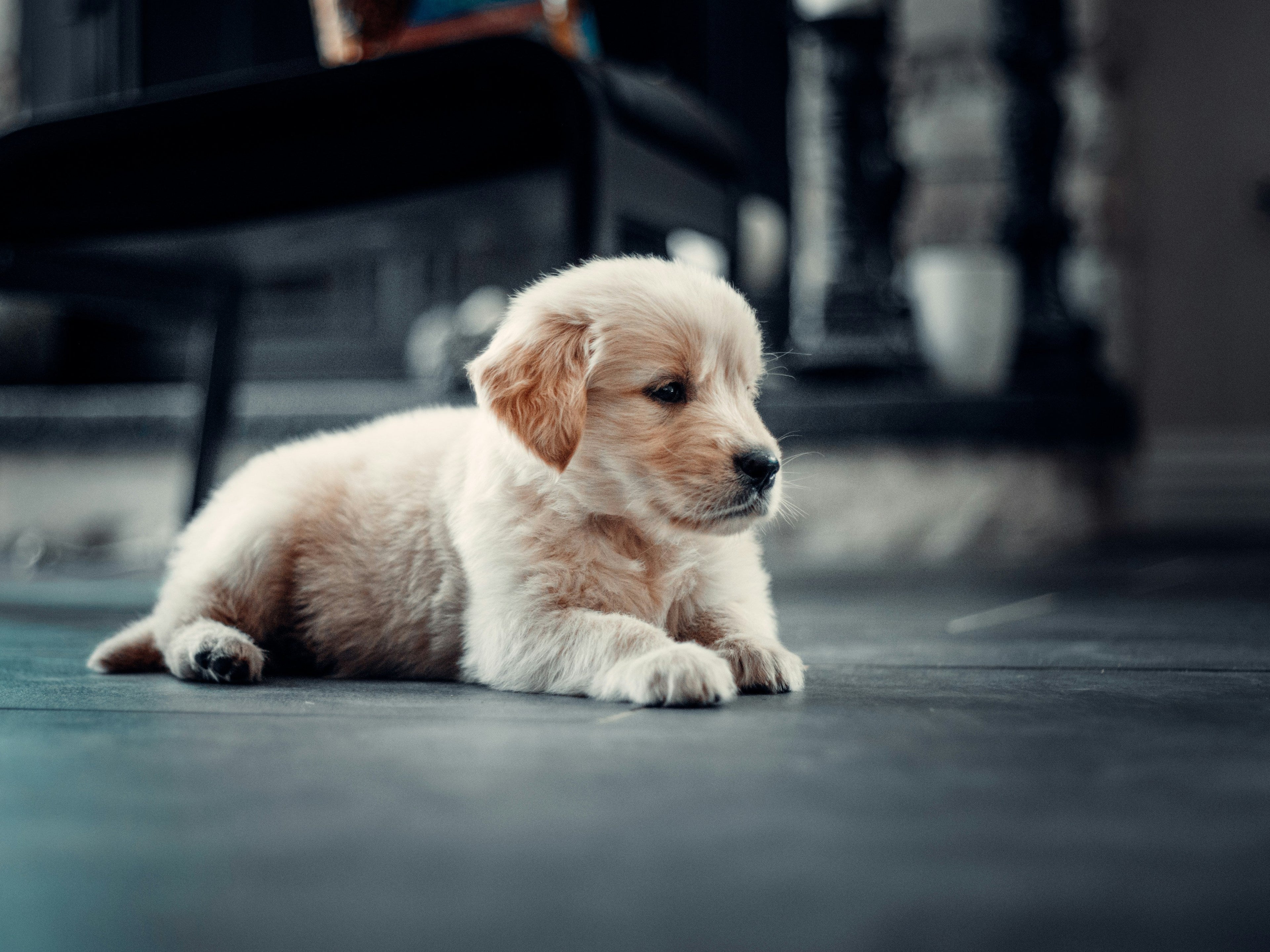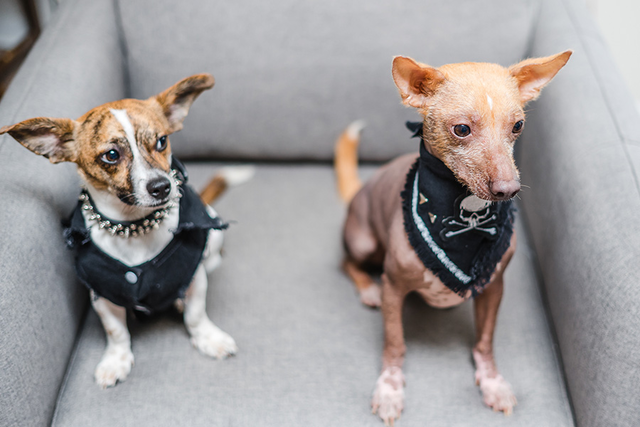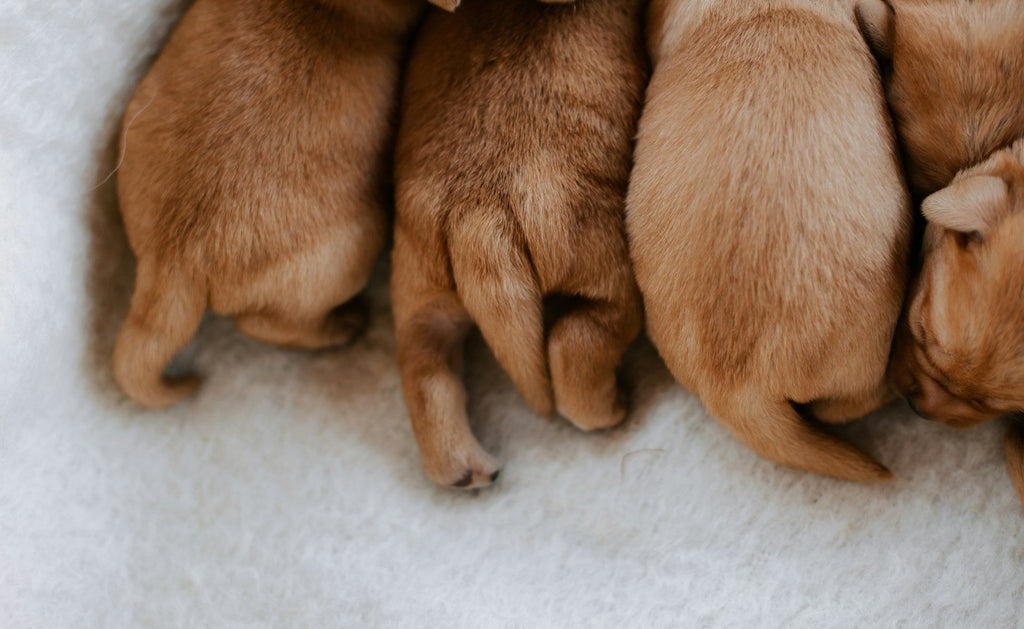Du désordre au succès : apprentissage de la propreté pour votre chiot en 7 jours

Entraîner un nouveau chiot peut être à la fois passionnant et difficile.
L’une des premières choses qui préoccupent souvent les nouveaux propriétaires d’animaux de compagnie est de savoir comment apprendre à leur ami à quatre pattes à faire ses besoins.
Avec la bonne approche, de la patience et de la cohérence, vous pouvez apprendre à votre chiot de bonnes habitudes de propreté en seulement sept jours. Êtes-vous prêt à recevoir les meilleurs conseils de dressage de chiots ? C'est parti !
Comprendre l’apprentissage de la propreté des chiots
Avant de passer aux étapes suivantes, il est important de comprendre pourquoi l'apprentissage de la propreté est crucial. Non seulement il permet de garder votre maison propre, mais il pose également les bases du comportement futur de votre chiot.
Les chiots sont des créatures d'habitudes et prospèrent grâce à la routine, ce qui en fait d'excellents apprenants lorsqu'ils reçoivent les bons conseils.
Pourquoi la cohérence est essentielle
Les chiots ont besoin de régularité pour comprendre ce qu'on attend d'eux. Établir une routine aide votre chiot à savoir quand et où il doit faire ses besoins. La régularité dans l'entraînement renforce également la confiance et le lien avec votre animal.
Choisissez le bon endroit
Désignez un endroit spécifique dans votre jardin ou dans un espace extérieur à proximité où vous souhaitez que votre chiot fasse ses besoins. Cet endroit doit être facilement accessible et exempt de distractions, ce qui permet à votre chiot de se concentrer plus facilement sur la tâche à accomplir.

Guide étape par étape pour l'apprentissage de la propreté
Jour 1 : Introduction et Observation
Le premier jour de formation consiste à apprendre à connaître les habitudes naturelles de votre chiot.
-
Établissez un horaire : les chiots ont généralement besoin de sortir après avoir mangé, bu, joué ou s'être réveillés. Commencez par sortir votre chiot toutes les heures à l'endroit qui lui est désigné.
-
Soyez attentif aux signes : soyez attentif aux signes indiquant que votre chiot a besoin d'aller aux toilettes, comme s'il renifle, tourne en rond ou gémit. Lorsque vous voyez ces signes, emmenez-le immédiatement dehors.
-
Utilisez un mot clé : choisissez un mot ou une expression comme « faire pipi » à utiliser systématiquement chaque fois que vous sortez votre chiot. Cela l'aide à associer l'action à la commande.
Jour 2-3 : Renforcer les comportements positifs
En vous appuyant sur la routine du jour 1, concentrez-vous sur le renforcement des comportements positifs.
-
Félicitations et récompenses : Une fois que votre chiot a fait ses besoins à l'extérieur, félicitez-le immédiatement avec enthousiasme et offrez-lui une petite friandise. Ce renforcement positif lui permet de comprendre qu'il a fait quelque chose de bien.
-
Évitez les punitions : si votre chiot a un accident à l'intérieur, évitez de le gronder. Nettoyez les dégâts en silence et concentrez-vous sur les sorties régulières. Les punitions peuvent créer de la peur et de la confusion, ce qui entrave le processus d'apprentissage.
Jour 4-5 : Prolongez le temps entre les pauses
Au fur et à mesure que votre chiot commence à comprendre la routine, augmentez progressivement le temps entre les pauses toilettes.
-
Augmentez les intervalles : commencez par ajouter des incréments de 15 minutes au temps entre les pauses, en observant attentivement le comportement de votre chiot.
-
Maintenez une routine : maintenez des horaires d'alimentation et d'arrosage cohérents pour aider à réguler les besoins de toilette de votre chiot.
Jour 6 : Routine du soir
La nuit peut être difficile, mais avec de la patience, vous pouvez établir une bonne routine.
-
Limitez votre consommation d’eau : Réduisez votre consommation d’eau une heure avant le coucher pour minimiser les accidents nocturnes.
-
Pauses nocturnes : sortez votre chiot une ou deux fois par nuit, surtout s'il est très jeune. À mesure qu'il grandit, il pourra se retenir plus longtemps.
Jour 7 : Réviser et ajuster
Au septième jour, votre chiot devrait avoir une bonne compréhension de sa routine de toilette.
-
Évaluer les progrès : évaluez les progrès de votre chiot et ajustez le programme si nécessaire. Certains chiots peuvent avoir besoin d'un peu plus de temps, et ce n'est pas grave !
-
Célébrez vos succès : célébrez vos progrès avec beaucoup d’éloges et d’affection. N’oubliez pas que chaque chiot est différent et que la patience est essentielle.
Défis et solutions communs
Même avec les meilleures intentions, des difficultés peuvent survenir lors de l'apprentissage de la propreté. Voici quelques problèmes courants et comment les résoudre :
Régression dans la formation
Il est normal que les chiots connaissent des rechutes. Si cela se produit, revoyez les étapes précédentes, renforcez la routine et maintenez la cohérence.
Dresser un chiot têtu
Pour les chiots têtus, augmentez la fréquence des pauses toilettes et assurez-vous d'utiliser des friandises de grande valeur comme récompenses.
Gérer les accidents en intérieur
Si les accidents continuent à l'intérieur, évaluez la situation. Sortez-vous votre chiot assez souvent ? Y a-t-il des distractions dans sa zone désignée ? Adaptez-vous la situation si nécessaire.
Des produits innovants pour faciliter la formation
En plus de vos efforts d’apprentissage, il existe des produits innovants qui peuvent faciliter l’apprentissage de la propreté :
-
Bac à litière pour chien : un bac à litière pour chien, ou « salle de bain pour chien », offre une solution pratique de salle de bain intérieure pour les propriétaires d'animaux de compagnie, en particulier ceux qui vivent en appartement ou qui ont un accès extérieur limité. Il offre un espace désigné pour que les chiens puissent faire leurs besoins, ce qui permet de garder la maison propre et constitue un outil de dressage utile pour les chiots ou les chiens non dressés. Grâce à des matériaux absorbants et à des surfaces faciles à nettoyer, le bac à litière pour chien aide à contenir les odeurs et simplifie le nettoyage. Il réduit également le stress en cas de mauvais temps, permettant aux chiens de faire leurs besoins sans avoir à sortir sous la pluie ou la neige.
-
De plus, il permet aux propriétaires d'animaux de compagnie de surveiller la santé de leur chien en suivant ses habitudes de toilette, ce qui permet de détecter rapidement les problèmes de santé potentiels. Dans l'ensemble, un bac à litière pour chien est une solution pratique et efficace qui maintient la propreté, favorise l'entraînement et simplifie les routines pour les chiens et les propriétaires. Tapis d'entraînement pour chiots : utiles pour les habitants d'appartements ou en cas de mauvais temps, ces tapis offrent une solution de secours en cas d'accidents à l'intérieur.
-
Nettoyants enzymatiques : ils éliminent les odeurs et les taches causées par les accidents, empêchant votre chiot de revenir au même endroit.
-
Jouets interactifs : garder votre chiot stimulé mentalement peut réduire l’anxiété et améliorer la concentration pendant l’entraînement.

Pensée finale ( écorce)
L'apprentissage de la propreté pour chiots nécessite de la patience, de la régularité et un peu de créativité. En suivant ce guide étape par étape, vous pouvez établir une routine solide qui aidera votre chiot à apprendre rapidement et efficacement.
N'oubliez pas de célébrer les petites victoires tout au long du chemin et n'hésitez pas à demander de l'aide si des difficultés surviennent. Avec amour et dévouement, vous et votre chiot profiterez ensemble d'un foyer propre et heureux. Bon entraînement !



